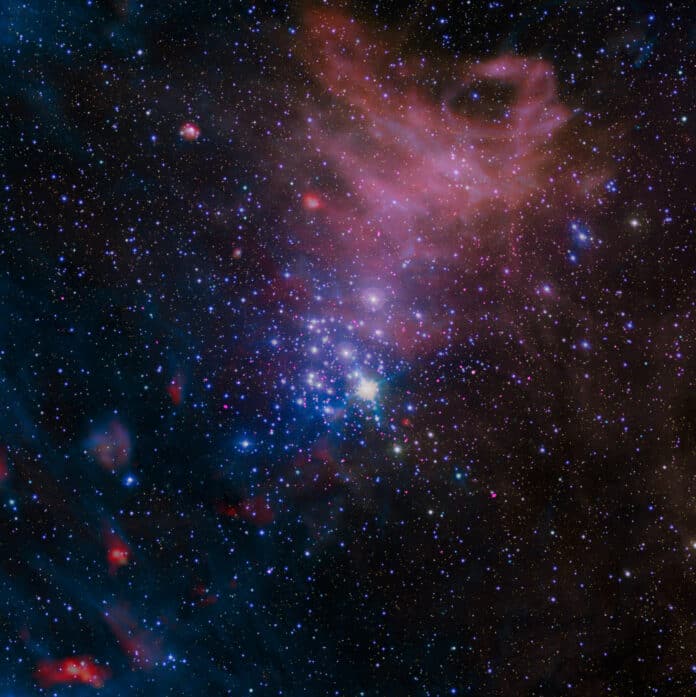Many stars begin their lives in open clusters. This makes open clusters valuable for astronomers investigating the evolution of stars and planets because they allow the study of many stars of similar ages forged in the same environment.
Now, the most thorough investigation of how magnetically active young stars are has been done by astronomers. This gives scientists a glimpse into how planets’ atmospheres could entirely or partially evaporate due to X-rays from stars similar to the Sun but billions of years younger.
A team of astronomers from Penn State University, under the direction of Konstantin Getman, examined a sample of over 6,000 stars in ten distinct open clusters ranging from 7 million to 25 million years. Astronomers sought to learn how the magnetic activity levels of stars like our Sun change during the first tens of millions of years after they form.
The team used NASA’s Chandra X-ray Observatory for the study because stars with more activity linked to magnetic fields are brighter in X-rays.
This composite image shows one of those clusters, NGC 3293, which is 11 million years old and is located about 8,300 light-years from Earth in the Milky Way galaxy. The image contains X-rays from Chandra (purple) as well as infrared data from ESA’s Herschel Space Observatory (red), longer-wavelength infrared data from NASA’s retired Spitzer Space Telescope (blue and white), and optical data from the MPG/ESO 2.2-meter telescope at ESO’s La Silla Observatory in Chile appearing as red, white and blue.
The Chandra data were then combined with ESA’s Gaia satellite data to determine which stars are in the open clusters and which are in the foreground or background. Scientists identified nearly a thousand members of the cluster.
Their findings for the open clusters were paired with earlier Chandra observations of stars as young as 500,000. The scientists found that, for the first few million years, the X-ray brightness of young, Sun-like stars remains generally constant; however, between 7 and 25 million years of age, this brightness declines. The rate of reduction is quicker with heavier stars.
To understand this decline, scientists first get detailed insights into the interior of the Sun and Sun-like stars. The dynamo within such stars generates a magnetic field. This process involves the star’s rotation and convection, the rising and falling of hot gas in the star’s interior.
Because their convection zones shrink with age, Sun-like stars around the age of NGC 3293 have far less effective dynamos. This is a reasonably slow process for stars with masses lower than the Sun. A dynamo dissipates for increasingly massive stars because their convection zone disappears.
In the disc of gas and dust that surrounds all young stars, the rate at which planets form is closely correlated with the star’s activity. The fastest-clearing, most magnetically active newborn stars rapidly clear away their discs, stopping planet formation.
In the disc of gas and dust that surrounds all young stars, the rate at which planets form is closely correlated with the star’s activity. The fastest-clearing, most magnetically active newborn stars rapidly clear away their discs, stopping planet formation.
The potential habitability of the planets that form after the disc has vanished is likewise impacted by this activity, measured in X-rays. Scientists estimate that if a star is particularly active, as are many of the NGC 3293 stars in the Chandra data, it will blast the planets in its system with intense X-rays and ultraviolet light.
In some situations, this high-energy onslaught might evaporate much of an Earth-sized rocky planet’s initial, hydrogen-rich atmosphere within a few million years. Unless a magnetic field shields it, it may also wipe away a carbon dioxide-rich atmosphere that forms later. The magnetic field of our planet itself shielded Earth from such a scenario.
Journal Reference:
- Konstantin V. Getman et al. Evolution of X-Ray Activity in <25 Myr Old Pre-main Sequence Stars. The Astrophysical Journal. DOI: 10.3847/1538-4357/ac7c69
